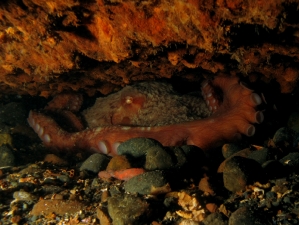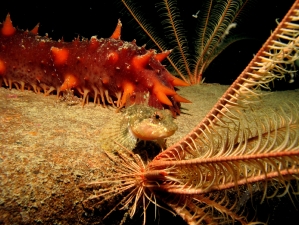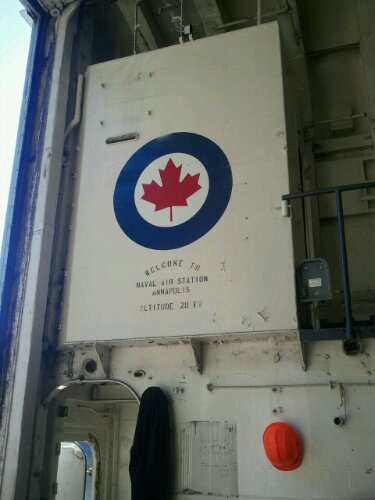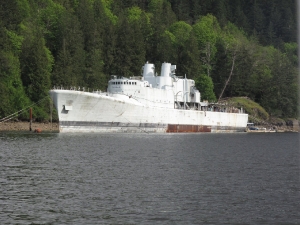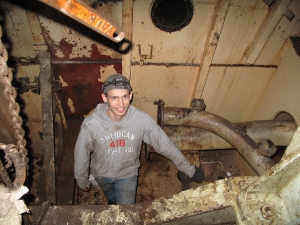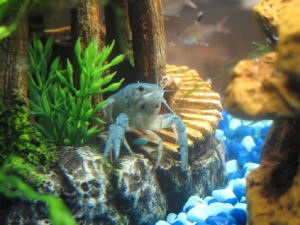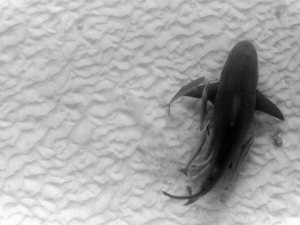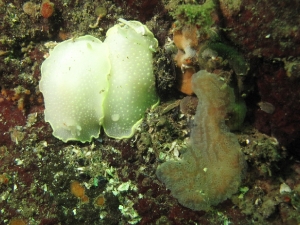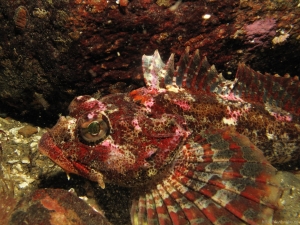
From the left, Dave, Will and Paul
After a much, much too long hiatus from diving, I jumped on the opportunity to get back in the water, with a trip to Tuwanek with one of the local dive shops. There was a large group of divers, and all in all we had two good dives.
In spite of being a bit rusty after a large diving break, and even more rusty with the camera, I managed to get some good photos. (At least I thought they were good, until I opened up “Marine Life of the Pacific Northwest” to ID a few creatures, and compared my photos to the ones in there….)
The visibility was atrocious in the first 40-50 feet or so, however once below 60 feet or so, it cleared up to amazing (if dark) visibility. The first dive we dove on the left island, in search of Octopuses. I tried my wide angle lens, but mistakenly left the ISO cranked up to at 800, which on the Powershot G10 leads to some very grainy photographs. I managed to get some good shots of my dive buddies (Team Better-Than-Awesome), as well as some sea-life.
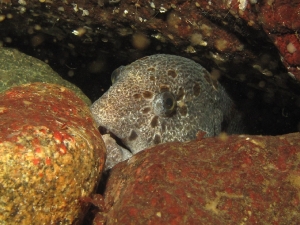
Wolf Eel!
On the second dive, we dove the Right island. I left the wide angle on shore, and was glad I did as there was plenty of opportunities for a lot of non wide-angle shots. Paul led us to a wolf eel (The first one I’ve seen in the wild!), and later on to an Octopus, however by the time I found the Octo, it was tucked in deep into it’s crevice, so I didn’t try to take any photos of it. By the end of the dive, we had made our way around the second island, which led to a long surface swim back.
A great couple of dives, with a great group of people — An excellent way to spend a Saturday.
Click below for more photos. A great way to browse through them is the “View with Piclens” option. Although it didn’t work on my blog before, an update of the NextGen Gallery plugin I use to manage photos on here has fixed it.
View full article »


